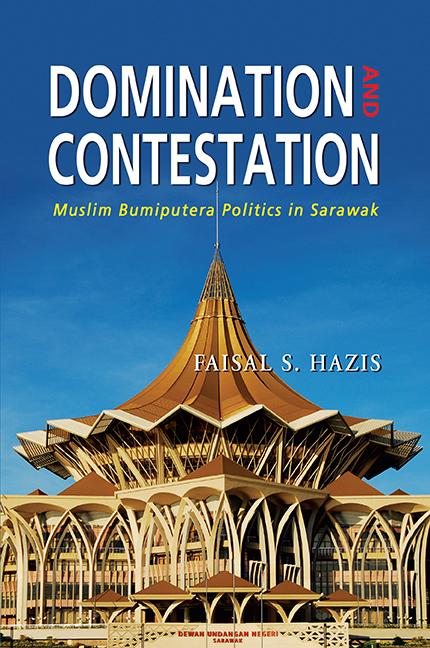Book contents
- Frontmatter
- Contents
- List of Tables
- List of Figures
- Preface
- List of Abbreviations
- 1 Introduction
- 2 State and Social Forces in Sarawak
- 3 The Resurgence of Muslim Bumiputera Politics, 1970–81
- 4 Years of Turbulence, 1981–87
- 5 Consolidation and Domination of the Muslim Bumiputera, 1987–2003
- 6 Muslim Bumiputera Politics in the Post-Mahathir Era, 2003–06
- 7 The Coastal Malays of Southwest Sarawak: A Case Study of the Muslim Bumiputera's Political Domination
- 8 Conclusion
- Postscript
- Appendices
- Bibliography
- Index
- About the Author
4 - Years of Turbulence, 1981–87
Published online by Cambridge University Press: 21 October 2015
- Frontmatter
- Contents
- List of Tables
- List of Figures
- Preface
- List of Abbreviations
- 1 Introduction
- 2 State and Social Forces in Sarawak
- 3 The Resurgence of Muslim Bumiputera Politics, 1970–81
- 4 Years of Turbulence, 1981–87
- 5 Consolidation and Domination of the Muslim Bumiputera, 1987–2003
- 6 Muslim Bumiputera Politics in the Post-Mahathir Era, 2003–06
- 7 The Coastal Malays of Southwest Sarawak: A Case Study of the Muslim Bumiputera's Political Domination
- 8 Conclusion
- Postscript
- Appendices
- Bibliography
- Index
- About the Author
Summary
INTRODUCTION
The political pact between the central state and Sarawak's first strongman-politician, Rahman Yakub, had proven to be successful in maintaining the state's presence in Sarawak. At the same time, it strengthened the ruling party's domination of the electorate, particularly the Muslim bumiputera. Realizing the effectiveness of this political pact, the central state continued to rely on Muslim bumiputera strongmen-politicians to dominate Sarawak after Rahman's departure. This paved the way for another influential Muslim Melanau intelligentsia, Abdul Taib Mahmud, to occupy the powerful Chief Minister's seat, hence maintaining the Muslim bumiputera's grip on Sarawak politics. Through the highest political office in the negeri, Taib has transformed himself into an even more powerful strongman-politician than his uncle, introducing sweeping changes in the negeri.
Taib's journey towards attaining immense power is not without intrigue and contestation. In his twenty-seven years as Sarawak's Chief Minister, the strongman-politician has survived several attempts to unseat him, outlasted many federal and negeri ministers, witnessed the dissolution and formation of many political parties, led the SBN through six Council Negeri elections and six parliamentary elections, served under three Prime Ministers and overseen the rapid development of Sarawak. This chapter and the following two chapters chronicle Taib's journey as Sarawak's strongman-politician and analyse his dual roles as the central state's representative and local strongman. These chapters also examine significant political events during Taib's tenure as the Chief Minister with a special focus on the Muslim bumiputera. As a start, this chapter discusses Taib's first six years in office which was considered as the most testing years of his long illustrious political career. A particular focus is given in analysing the crisis that engulfed the Muslim bumiputera community and also Taib Mahmud's response towards the crisis. But before analysing the turbulent years of Sarawak politics, this chapter will first discuss Taib Mahmud's rise in becoming, arguably, the most powerful strongman-politician in the negeri.
ABDUL TAIB MAHMUD: PRESERVING THE STRONGMAN-POLITICIAN's RULE
Abdul Taib Mahmud's appointment as Sarawak's fourth Chief Minister was highly anticipated by the people of Sarawak. When Abdul Rahman Yakub who was also Taib's uncle decided to step down, it was obvious to everybody that Taib would succeed his uncle as the new Chief Minister. As a young educated Muslim bumiputera, Taib's political ascendancy was fast-tracked mainly due to his uncle's patronage.
- Type
- Chapter
- Information
- Domination and ContestationMuslim Bumiputera Politics in Sarawak, pp. 113 - 151Publisher: ISEAS–Yusof Ishak InstitutePrint publication year: 2011

